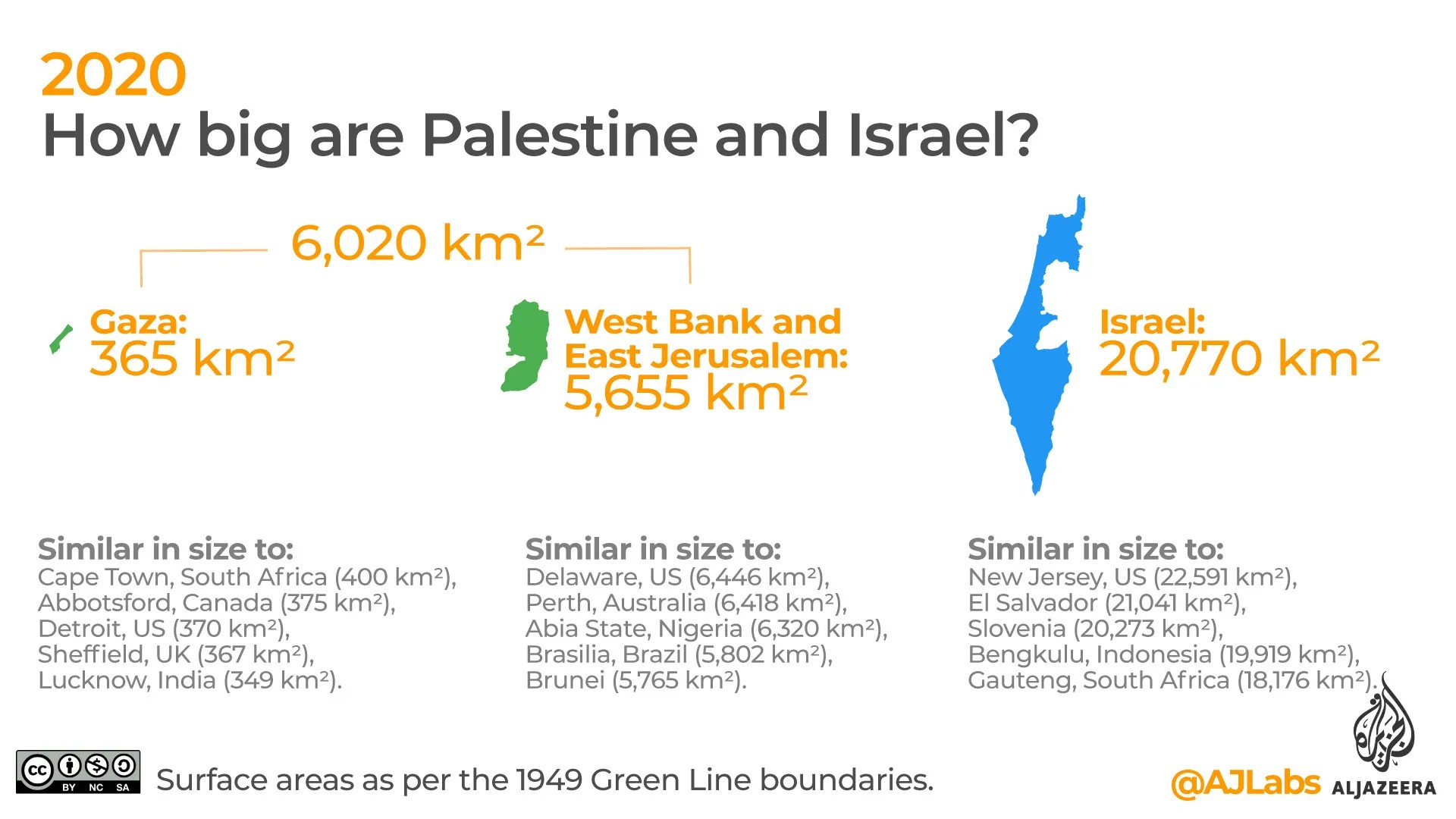The topic of "Palestine size comparison" is crucial in understanding the geopolitical and cultural dynamics of the region. The area known as Palestine has been the center of conflict and debate for decades, with its historical significance deeply rooted in the narratives of both Israelis and Palestinians. In this article, we will explore what Palestine is, its size in comparison to other countries, and how these comparisons impact the ongoing discussions about sovereignty and rights.
By examining the geographical dimensions, we can gain insight into the complexities of land ownership, demographics, and the implications of territorial disputes. This analysis will shed light on why size matters in the context of Palestine, the challenges its people face, and how the international community perceives this region.
In the following sections, we will delve into the specific measurements of Palestine, compare it with various countries, and discuss how these comparisons can influence public perception and policy-making. Join us as we uncover the layers of this often-overlooked topic.
Table of Contents
- What is Palestine?
- Geographical Size of Palestine
- Comparison with Other Countries
- Demographics and Population
- Historical Context of Palestine
- Current Political Situation
- International Perspective on Palestine
- Conclusion
What is Palestine?
Palestine refers to a geographic region in Western Asia, encompassing the modern State of Israel and the Palestinian territories of the West Bank and Gaza Strip. The term "Palestine" has been used historically to denote various territories and holds significant cultural and religious importance.
Historical Significance
The historical roots of Palestine date back thousands of years, with significant events shaping its identity. From ancient civilizations to modern conflicts, the land has witnessed the rise and fall of empires.
Current Political Status
Today, Palestine is recognized by over 130 countries and has non-member observer state status at the United Nations. However, its political status remains contentious and is marked by ongoing disputes over territory and governance.
Geographical Size of Palestine
The total area of Palestine is approximately 6,020 square kilometers (2,320 square miles). This includes the West Bank and Gaza Strip. In comparison, Palestine is significantly smaller than many countries, which plays an essential role in understanding its geopolitical challenges.
Comparison with Other Countries
To put Palestine's size in perspective, let's compare it with several countries:
- Palestine vs. Luxembourg: Luxembourg has an area of about 2,586 square kilometers, making Palestine more than twice its size.
- Palestine vs. Jamaica: Jamaica covers approximately 10,991 square kilometers, meaning Palestine is about 55% the size of Jamaica.
- Palestine vs. Cyprus: Cyprus is about 9,251 square kilometers, making Palestine around 65% of Cyprus's size.
- Palestine vs. Delaware (USA): The U.S. state of Delaware has an area of about 6,446 square kilometers, making Palestine slightly smaller.
Demographics and Population
According to recent estimates, the population of Palestine is around 5 million people, with a majority residing in the West Bank and Gaza Strip. The density of the population can lead to various social and economic challenges.
Ethnic and Cultural Diversity
Palestine is home to a diverse population, including various ethnic groups and communities. The cultural heritage reflects a rich tapestry of traditions, languages, and religious beliefs.
Impact of Size on Population Distribution
The relatively small size of Palestine contributes to high population density, particularly in urban areas. This can strain resources and infrastructure, leading to additional complications in governance and daily life.
Historical Context of Palestine
The historical context of Palestine is vital to understanding its current size and territorial disputes. The region has undergone numerous changes in control, particularly during the Ottoman Empire and the British Mandate.
Current Political Situation
The political landscape of Palestine is marked by division between the Palestinian Authority in the West Bank and Hamas in the Gaza Strip. This division complicates efforts toward achieving peace and sovereignty.
International Perspective on Palestine
The international community views Palestine through various lenses, with some countries recognizing its statehood while others support Israel's claims. These differing perspectives impact diplomatic relations and aid.
Conclusion
In summary, the size of Palestine plays a crucial role in its geopolitical significance, demographic challenges, and historical context. Understanding these factors is essential for anyone interested in the region's complexities. We encourage you to share your thoughts in the comments below and explore more about Palestine's rich history and culture.
Thank you for reading! We hope to see you back here for more insightful articles on important topics.
Exploring The Fascinating World Of Mexico Rocket: A Comprehensive Guide
Exploring Jenny Slate's Ethnicity: A Comprehensive Look
Rockstar Tennis: The Intersection Of Music And Sports


